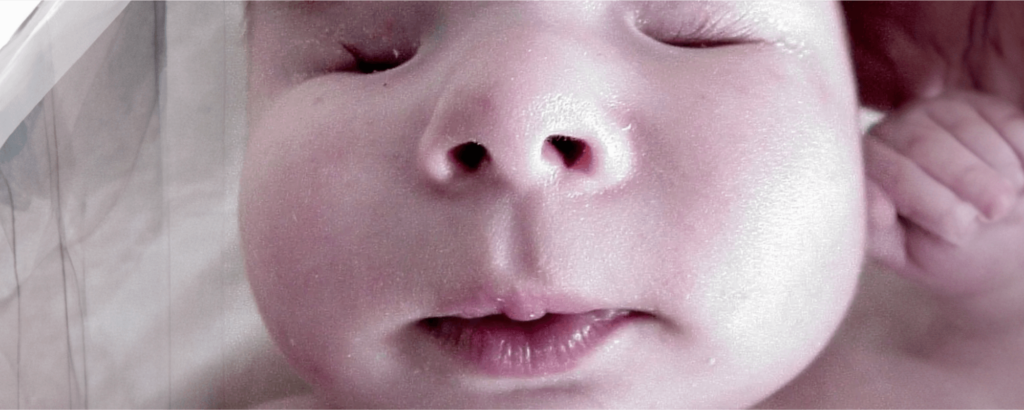Bilateral Anophthalmia: Understanding The Rare Condition Of Babies Born Without Eyes

Table of Contents
What is Bilateral Anophthalmia?
Definition and Prevalence
Bilateral anophthalmia is a severe congenital anomaly resulting in the complete absence of both eyes. Unlike microphthalmia, where the eyes are present but abnormally small or underdeveloped, anophthalmia signifies a complete lack of ocular structures. The prevalence of bilateral anophthalmia is extremely low, with estimates ranging from 1 in 10,000 to 1 in 100,000 births, highlighting its rarity. This makes it a significant challenge for researchers and medical professionals alike.
Distinguishing Anophthalmia from Microphthalmia
It's essential to distinguish between anophthalmia and microphthalmia. Anophthalmia is the complete absence of the eye, while microphthalmia describes abnormally small eyes. This distinction impacts diagnosis and treatment significantly. Anophthalmia requires different management strategies than microphthalmia, which may involve surgical interventions to address the underdeveloped structures. Accurate diagnosis is paramount for appropriate intervention and support.
- Genetic and Environmental Factors: While the exact causes of bilateral anophthalmia remain largely unknown, research suggests a complex interplay of genetic and environmental factors. Specific gene mutations have been linked to the condition in some cases, but many instances remain unexplained. Exposure to certain teratogens during pregnancy may also play a role.
- Prenatal Diagnosis: Prenatal ultrasound scans can sometimes detect the absence of eyeballs, offering early diagnosis and allowing parents time to prepare. However, detection isn't always possible prenatally.
- Resources: For more detailed information, consult reputable organizations such as the National Institutes of Health (NIH) and the American Academy of Ophthalmology.
Diagnosis and Medical Management of Bilateral Anophthalmia
Prenatal Diagnosis and Postnatal Confirmation
Prenatal diagnosis of bilateral anophthalmia can be challenging but may be suspected during routine ultrasound examinations. Postnatal confirmation is achieved through a thorough ophthalmological examination, usually by an ophthalmologist specializing in pediatric eye care. Imaging techniques like CT scans or MRI may provide additional information on the orbital structure.
Treatment Options and Support
While there is no cure for bilateral anophthalmia, management focuses on providing support and maximizing the child's development. This includes:
-
Prosthetic Eyes: Custom-fitted prosthetic eyes (ocular prostheses) can improve the child's appearance and contribute to a more normal facial structure. These range from simple shells to highly realistic artificial eyes.
-
Sensory Integration Therapy: This type of therapy helps children develop an understanding of their environment despite their lack of sight.
-
Psychosocial Support: Early and ongoing psychosocial support for the child and family is crucial to address emotional, developmental, and social challenges. This involves a multidisciplinary team including ophthalmologists, psychologists, and social workers.
-
Genetic Counseling: Genetic counseling is essential for families affected by bilateral anophthalmia to understand the risk of recurrence and make informed decisions regarding future pregnancies.
-
Types of Prosthetic Eyes: Different types of prosthetic eyes are available, each with advantages and disadvantages regarding cost, durability, and appearance.
-
Interdisciplinary Care: A collaborative approach with ophthalmologists, psychologists, and social workers is crucial for optimal outcomes.
Living with Bilateral Anophthalmia: Challenges and Support
Developmental Challenges
Children born with bilateral anophthalmia face unique developmental challenges. The absence of vision impacts spatial awareness, depth perception, and object recognition. These limitations can affect mobility, social interaction, and overall development.
Social and Emotional Well-being
Social and emotional well-being are paramount. Early intervention, including sensory integration therapy and assistive technologies, is crucial for promoting positive self-esteem and adaptive functioning. A strong support system, including family, friends, therapists, and support groups, plays a vital role.
- Supporting Development: Sensory integration therapy, assistive technology (e.g., Braille, assistive listening devices), and adaptive learning techniques can significantly support a child’s development.
- Available Resources: Families can access vital support through national and international organizations dedicated to visual impairments, providing emotional, educational, and practical resources.
- Personal Stories: Sharing positive personal experiences (with consent) can offer hope and encouragement to other families.
Research and Future Directions
Ongoing Research and Potential Treatments
Ongoing research explores the genetic basis of bilateral anophthalmia and explores potential treatments, including gene therapy and stem cell therapies. While significant challenges remain, promising developments offer hope for future interventions.
Advocacy and Awareness
Raising awareness is crucial to support research, improve diagnosis, and enhance the quality of life for children and families. Advocating for research funding and increasing public understanding of bilateral anophthalmia is vital.
- Promising Advancements: Keep abreast of developments in gene therapy and other potential treatments through reputable medical journals and organizations.
- Relevant Research: Engage with research articles and studies related to anophthalmia, microphthalmia, and related genetic conditions.
- Supporting Organizations: Contribute to organizations dedicated to rare eye conditions and their research.
Conclusion
Bilateral anophthalmia is a rare but significant condition requiring specialized care and unwavering support. Understanding this rare congenital eye disorder, its challenges, and the available treatment options and support systems is essential for families and healthcare professionals alike. Early intervention, a multidisciplinary approach, and a strong support network are vital for maximizing the child's development and well-being. Learn more about bilateral anophthalmia today, seek medical attention if you have concerns, and support research efforts dedicated to improving the lives of individuals and families affected by this rare condition. Understanding bilateral anophthalmia is crucial for providing effective support and enhancing the lives of those affected. Support research into bilateral anophthalmia to help build a brighter future for children born with this condition.

Featured Posts
-
 Bilateral Anophthalmia Understanding The Rare Condition Of Babies Born Without Eyes
May 12, 2025
Bilateral Anophthalmia Understanding The Rare Condition Of Babies Born Without Eyes
May 12, 2025 -
 Bilan D Audience La Roue De La Fortune Avec Eric Antoine Sur M6 Apres 3 Mois
May 12, 2025
Bilan D Audience La Roue De La Fortune Avec Eric Antoine Sur M6 Apres 3 Mois
May 12, 2025 -
 Arrivee De Hanouna Sur M6 Une Voix S Eleve Pour Donner Son Avis
May 12, 2025
Arrivee De Hanouna Sur M6 Une Voix S Eleve Pour Donner Son Avis
May 12, 2025 -
 Alex Winters Early Career Unveiling His Forgotten Mtv Sketch Series
May 12, 2025
Alex Winters Early Career Unveiling His Forgotten Mtv Sketch Series
May 12, 2025 -
 John Wick The Case For A Beloved Characters Return After A Decade
May 12, 2025
John Wick The Case For A Beloved Characters Return After A Decade
May 12, 2025
Latest Posts
-
 I Fonitiki Ygeia Tis Tzesika Simpson Pragmatikotita I Fimi
May 12, 2025
I Fonitiki Ygeia Tis Tzesika Simpson Pragmatikotita I Fimi
May 12, 2025 -
 Overwhelmed And Under Pressure Jessica Simpsons Honest Account Of Her Career
May 12, 2025
Overwhelmed And Under Pressure Jessica Simpsons Honest Account Of Her Career
May 12, 2025 -
 I Tzesika Simpson Kai I Frontida Tis Fonis Tis
May 12, 2025
I Tzesika Simpson Kai I Frontida Tis Fonis Tis
May 12, 2025 -
 The Weight Of Expectations Jessica Simpsons Struggle For Success Alongside Britney And Christina Aguilera
May 12, 2025
The Weight Of Expectations Jessica Simpsons Struggle For Success Alongside Britney And Christina Aguilera
May 12, 2025 -
 Tzesika Simpson I Foni Tis Kai I Amfilegomeni Methodos Enisxysis
May 12, 2025
Tzesika Simpson I Foni Tis Kai I Amfilegomeni Methodos Enisxysis
May 12, 2025
